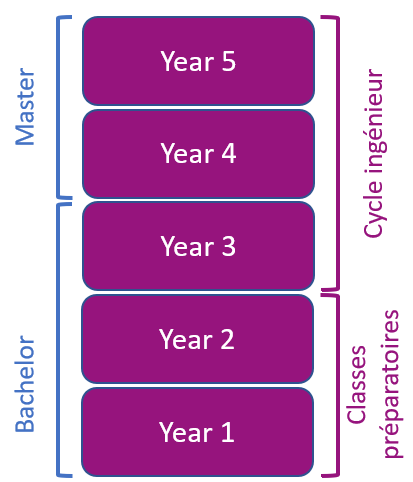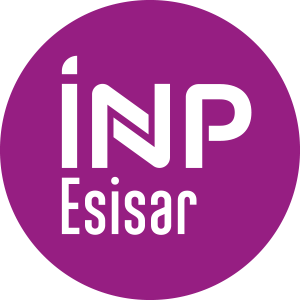Number of hours
- Lectures 10.5
- Projects -
- Tutorials 9.0
- Internship -
- Laboratory works -
- Written tests -
ECTS
ECTS 1.5
Goal(s)
To be able to make the connection between the electronic band structure of a semiconductor (SC) and its crystal structure.
To be able to interpret a global representation of an atom in terms of energy band.
To be able to make a differentiation between insulator, semiconductor and metal based on the electronic band structure of such materials.
To be able to understand why a semiconductor is doped. To know how to interpret the energy band induced by doping.
To be able to associate an energy band to different carriers present in an extrinsic SC.
To be able to calculate the carrier densities present in an intrinsic and extrinsic SC.
To be able to model the transport phenomena present in an extrinsic SC due to an external perturbation.
To be able to explain how a PN junction operates.
To be able to make the link between the macroscopic (nonlinear behavior) and microscopic behavior of a PN junction.
Romain SIRAGUSA
Content(s)
I. Fundamentals of semiconductors
Crystalline structure
Electronic band in semiconductors
Intrinsic semiconductor in thermodynamic equilibrium
Extrinsic semiconductor in thermodynamic equilibrium
II. Non-equilibrium Electrical Properties of Semiconductors
Small perturbations of the equilibrium
III. PN junction
Junction at thermodynamic equilibrium
Non-equilibrium junction
Practical use of diodes and transistors. Local ohm’s law, electrostatic forces (PH121 - Electrostatic-Magnetostatics), energy concepts, Notions of electromotive forces.
Evaluation
Exam 1H30, Undocumented, No calculator
CC = continuous assessment Exam
EXAM = Final Exam
Course ID : 2AMPH260
Course language(s): 
You can find this course among all other courses.
- Henry Mathieu, « Physique des semiconducteurs et des composants électriques », 3ème édition, Masson, 1996.
- Ben G. Streetman, « Solid state electronic devices », 3ème edition, Prentice-Hall International Editions.
- Donald Neamen, « Semiconducteur Physique and Devices », Mc Graw Hill.
- Philippe ROUX , cours & exercices « Théorie générale des semi-conducteurs ». http://rouxphi3.perso.cegetel.net/index.html
- D. Mathiot, cours « Physique des composants électroniques ». http://www-iness.c-strasbourg.fr/~mathiot/Cours/Composants/
What is a grande école ?
French engineering curriculum





